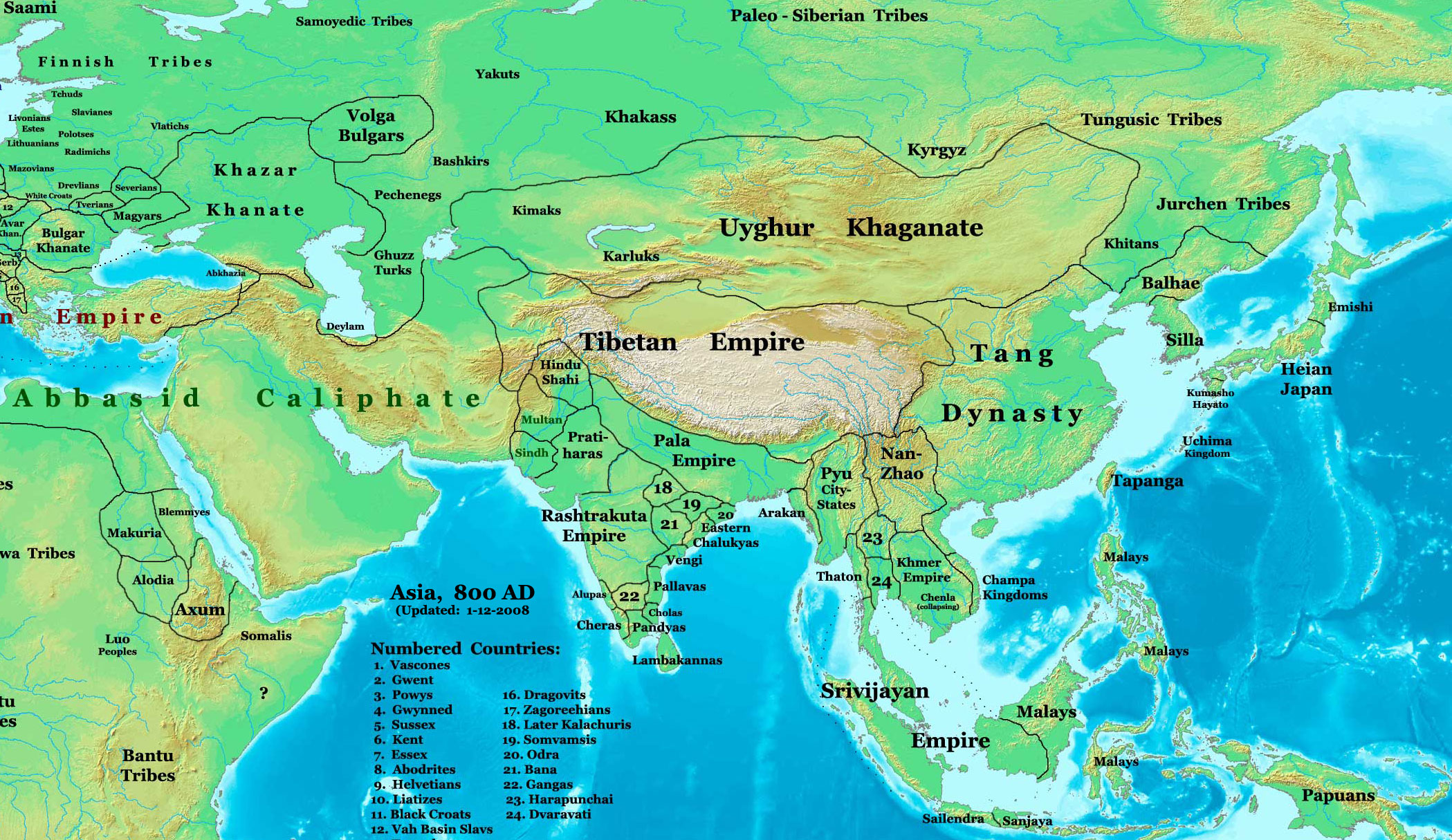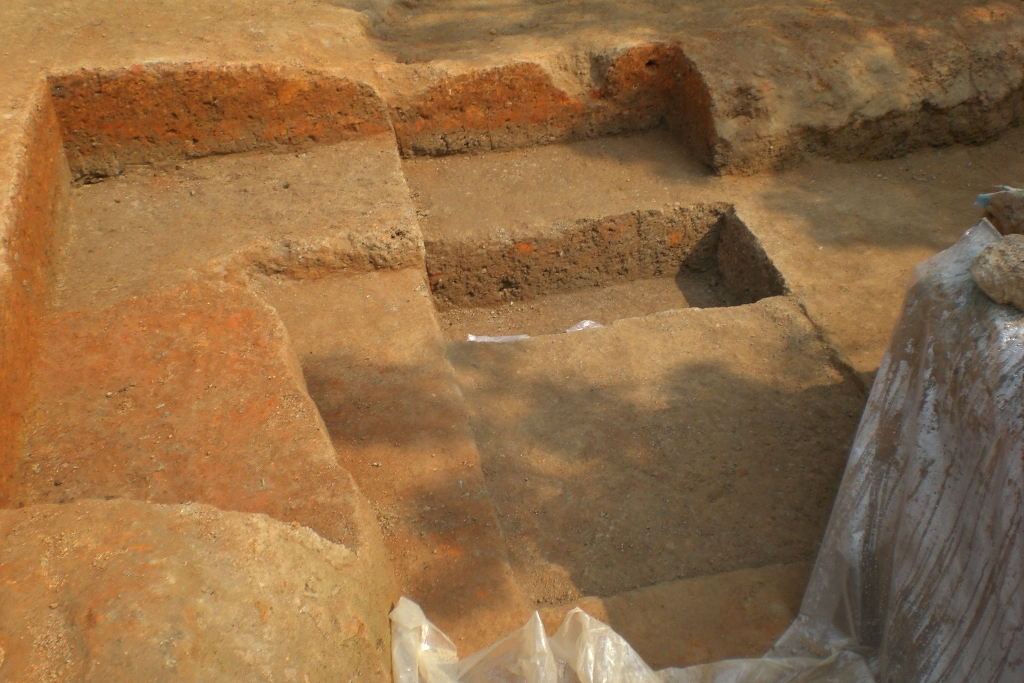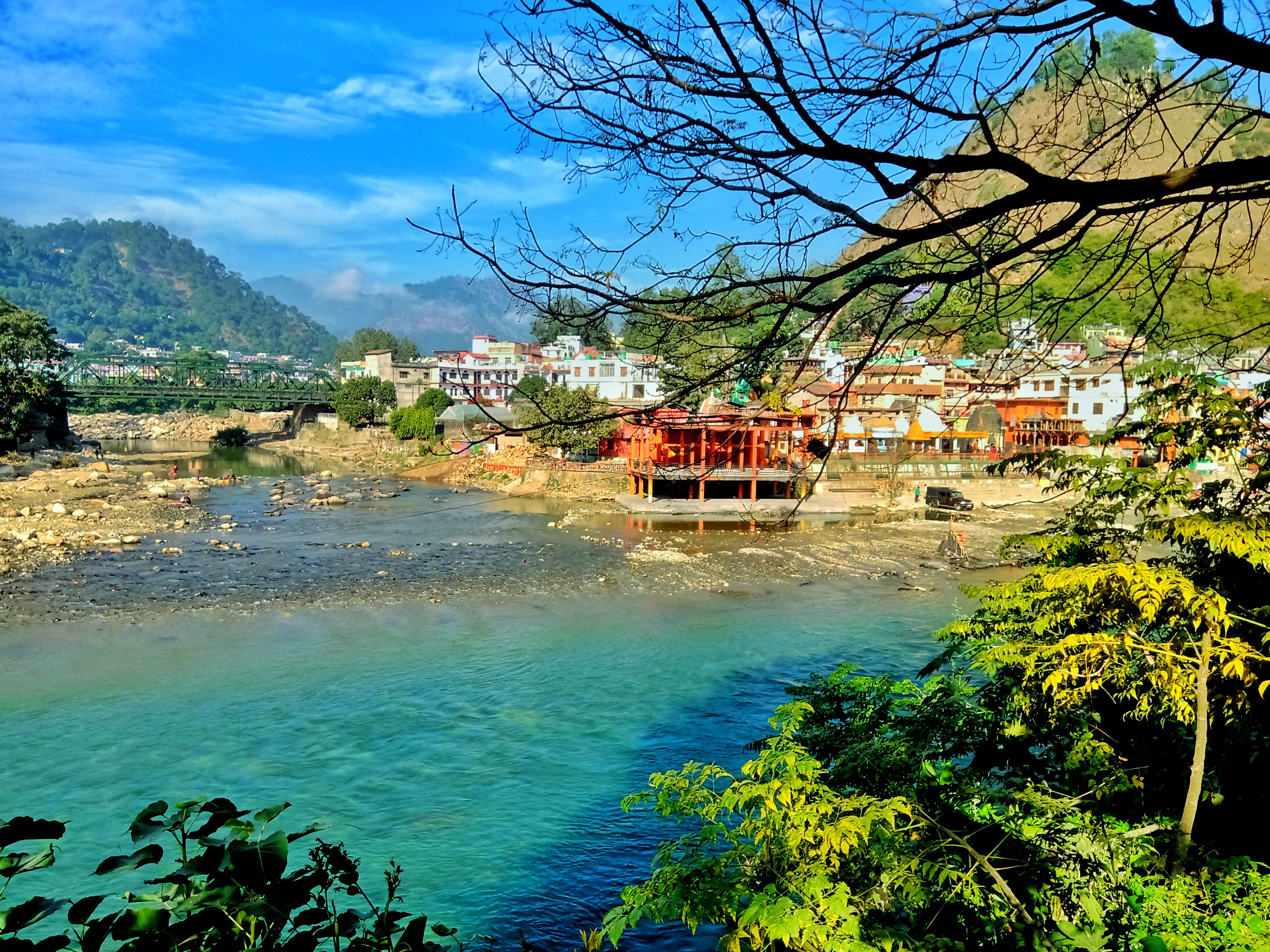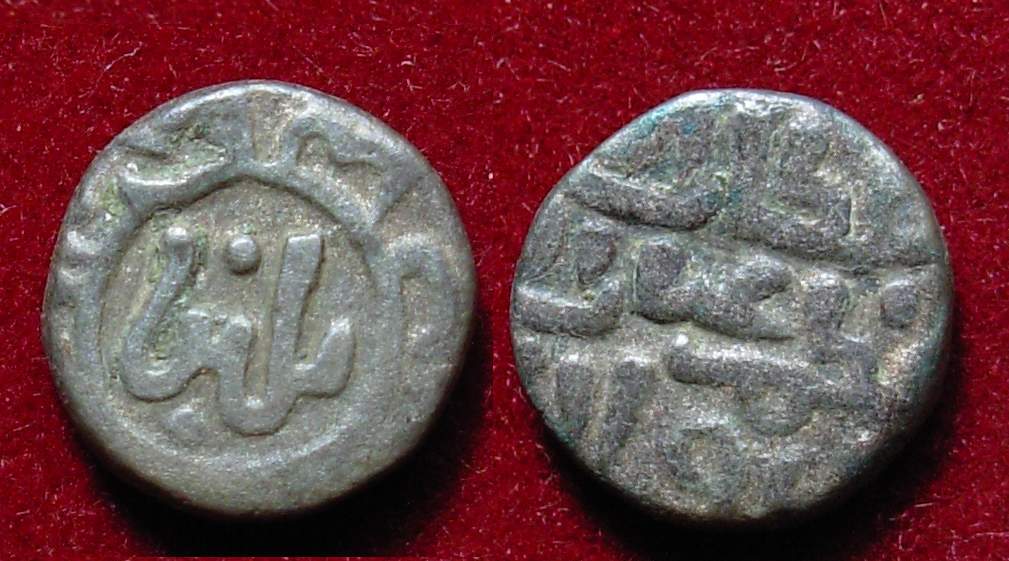|
Nasiruddin Bughra Khan
Nasiruddin Bughra Khan (, ) was the governor (1281–1287) and later the independent sultan of Bengal (1287–1291). He was the son of Delhi Sultan Ghiyasuddin Balban. Earlier Bughra Khan was the governor of Samana (Patiala) and Sanam (Sangrur). History Governor of Bengal Bughra Khan assisted his father, Sultan Ghiyasuddin Balban, to crush the rebellion of the governor of Lakhnauti, Tughral Tughan Khan. Then Bughra was appointed the governor of Bengal. After the death of his eldest brother, Prince Muhammad, he was asked to take the throne of Delhi by Sultan Ghiyasuddin. But Bughra was indulged in his Bengal governorship and refused the offer. Sultan Ghiyasuddin instead nominated Kaikhasrau, son of Prince Muhammad. Independent Sultan of Bengal After the death of Ghiyasuddin in 1287, Bughra Khan declared independence of Bengal. Nijamuddin, the Prime Minister, appointed Nasiruddin Bughra Khan's son, Qaiqabad, as the Sultan of Delhi. But inefficient ruling of Qaiqabad spread ... [...More Info...] [...Related Items...] OR: [Wikipedia] [Google] [Baidu] |
List Of Rulers Of Bengal
This is a list of rulers of Bengal. For much of History of Bengal, its history, Bengal was split up into several independent kingdoms, completely unifying only several times. In Kingdoms of Ancient India, ancient times, Bengal consisted of the kingdoms of Pundra kingdom, Pundra, Suhma kingdom, Suhma, Vanga kingdom, Vanga, Samatata and Harikela. In the 4th century BCE, during the reign of the Nanda Empire, the powerful rulers of Gangaridai sent their forces consisting of war elephants which led to the withdrawal of Alexander the Great from the Indian subcontinent. With the rise of Gopala in 750 AD, Bengal was united once more under the Buddhist and Shaivism, Shaivite Pala Empire. The Pala period is considered as one of golden eras of Bengali history as it brought stability and prosperity to Bengal after centuries of Civil war, Civil War, created outstanding works of art and architecture, proto-Bengali language developed under them including its first literary work, the Charyapa ... [...More Info...] [...Related Items...] OR: [Wikipedia] [Google] [Baidu] |
Gauḍa (city)
Gauḍa (also known as Gaur, Gour, Lakhnauti, Lakshmanavati and Jannatabad) is a historic city of Bengal in the eastern part of the Indian subcontinent, and one of the most prominent capitals of classical India, classical and medieval India, being the capital city of Bengal under several kingdoms. The Gauḍa (region), Gauḍa region was also a province of several pan-Indian empires. During the seventh century, the Gauda Kingdom was founded by King Shashanka, whose reign corresponds with the beginning of the Bengali calendar. Gour gradually became synonymous with Bengal and Bengalis. It was conquered by Bakhtiyar Khalji, a lieutenant of the Ghurid ruler Muhammad of Ghori in 1203. For a period of 112 years, between 1453 and 1565, Gauda was the capital of the Bengal Sultanate. In 1500, Gauda was the fifth-most populous city in the world, with a population of 200,000, as well as one of the most densely populated cities in the Indian subcontinent. The Portuguese people, Portuguese l ... [...More Info...] [...Related Items...] OR: [Wikipedia] [Google] [Baidu] |
13th-century Indian People
The 13th century was the century which lasted from January 1, 1201 (represented by the Roman numerals MCCI) through December 31, 1300 (MCCC) in accordance with the Julian calendar. The Mongol Empire was founded by Genghis Khan, which stretched from Eastern Asia to Eastern Europe. The conquests of Hulagu Khan and other Mongol invasions changed the course of the Muslim world, most notably the Siege of Baghdad (1258) and the destruction of the House of Wisdom. Other Muslim powers such as the Mali Empire and Delhi Sultanate conquered large parts of West Africa and the Indian subcontinent, while Buddhism witnessed a decline through the conquest led by Bakhtiyar Khilji. The earliest Islamic states in Southeast Asia formed during this century, most notably Samudera Pasai. The Kingdoms of Sukhothai and Hanthawaddy would emerge and go on to dominate their surrounding territories. Europe entered the apex of the High Middle Ages, characterized by rapid legal, cultural, and religious ... [...More Info...] [...Related Items...] OR: [Wikipedia] [Google] [Baidu] |
13th-century Indian Muslims
The 13th century was the century which lasted from January 1, 1201 (represented by the Roman numerals MCCI) through December 31, 1300 (MCCC) in accordance with the Julian calendar. The Mongol Empire was founded by Genghis Khan, which stretched from Eastern Asia to Eastern Europe. The conquests of Hulagu Khan and other Mongol invasions changed the course of the Muslim world, most notably the Siege of Baghdad (1258) and the destruction of the House of Wisdom. Other Muslim powers such as the Mali Empire and Delhi Sultanate conquered large parts of West Africa and the Indian subcontinent, while Buddhism witnessed a decline through the conquest led by Bakhtiyar Khilji. The earliest Islamic states in Southeast Asia formed during this century, most notably Samudera Pasai. The Kingdoms of Sukhothai and Hanthawaddy would emerge and go on to dominate their surrounding territories. Europe entered the apex of the High Middle Ages, characterized by rapid legal, cultural, and religious evol ... [...More Info...] [...Related Items...] OR: [Wikipedia] [Google] [Baidu] |
History Of India
Anatomically modern humans first arrived on the Indian subcontinent between 73,000 and 55,000 years ago. The earliest known human remains in South Asia date to 30,000 years ago. Sedentism, Sedentariness began in South Asia around 7000 BCE; by 4500 BCE, settled life had spread, and gradually evolved into the Indus Valley Civilisation, one of three early Cradle of civilization, cradles of civilisation in the Old World, which flourished between 2500 BCE and 1900 BCE in present-day Pakistan and north-western India. Early in the second millennium BCE, 4.2 kiloyear event, persistent drought caused the population of the Indus Valley to scatter from large urban centres to villages. Rigvedic tribes, Indo-Aryan tribes moved into the Punjab from Central Asia in several Indo-Aryan migration theory, waves of migration. The Vedic Period of the Vedic people in northern India (1500–500 BCE) was marked by the composition of their extensive collections of hymns (Vedas). The social structure ... [...More Info...] [...Related Items...] OR: [Wikipedia] [Google] [Baidu] |
History Of Bangladesh
The history of Bangladesh dates back over four millennia to the Chalcolithic period. The region's early history was characterized by a succession of Hindus, Hindu and Buddhism, Buddhist kingdoms and empires that fought for control over the Bengal region. Islam in Bangladesh, Islam arrived in the 8th century and gradually became dominant from the early 13th century with the conquests led by Bakhtiyar Khalji and the activities of Sunni Islam, Sunni missionaries like Shah Jalal. Muslim rulers promoted the spread of Islam by building mosques across the region. From the 14th century onward, Bengal was ruled by the Bengal Sultanate, founded by Fakhruddin Mubarak Shah, who established an individual currency. The Bengal Sultanate expanded under rulers like Shamsuddin Ilyas Shah, leading to economic prosperity and military dominance, with Bengal being referred to by Europeans as the richest country to trade with. The region later became a part of the Mughal Empire, and according to histor ... [...More Info...] [...Related Items...] OR: [Wikipedia] [Google] [Baidu] |
History Of Bengal
The history of Bengal is intertwined with the history of the broader Indian subcontinent and the surrounding regions of South Asia and Southeast Asia. It includes modern-day Bangladesh and the States and union territories of India, Indian states of West Bengal, Tripura and Assam's Karimganj district, located in the eastern part of the Indian subcontinent, at the Apex (geometry), apex of the Bay of Bengal and dominated by the Fertility (soil), fertile Ganges delta. The region was known to the ancient Greeks and Ancient Rome, Romans as ''Gangaridai'', a powerful kingdom whose war elephant forces led the withdrawal of Alexander the Great from India. Some historians have identified Gangaridai with other parts of India. The Ganges River, Ganges and the Brahmaputra River, Brahmaputra List of rivers in India, rivers act as a geographic marker of the region, but also connects the region to the broader Indian subcontinent. Bengal, at times, has played an important role in the History of ... [...More Info...] [...Related Items...] OR: [Wikipedia] [Google] [Baidu] |
Saryu River
The Sarju ( Kumaoni: सरज्यू, Hindi: सरयू), also known as Saryu, is a major river draining Central Kumaon region in the Indian state of Uttarakhand. Originating from Sarmul, Sarju flows through the cities of Kapkot, Bageshwar and Seraghat before joining Mahakali at Pancheshwar. The Sarju is the largest tributary of the Sharda River. The river forms the South-eastern border between the districts of Pithoragarh and Almora. Temperate and sub-Tropical forests cover the entire Catchment area of the River. Etymology The name is a noun derived from the Sanskrit root सृ ''sṛ'' "to flow". ' as a masculine noun means "air, wind". In the feminine it is the name of the river. Course The Sarju rises at a place known as Sarmul (or Sarmool), which is located in the extreme north of the Bageshwar district of Uttarakhand. The source of the river is situated at on the southern slope of a ridge of the Nanda Kot and is separated on the east from the source of Ramgan ... [...More Info...] [...Related Items...] OR: [Wikipedia] [Google] [Baidu] |
Vizier
A vizier (; ; ) is a high-ranking political advisor or Minister (government), minister in the Near East. The Abbasids, Abbasid caliphs gave the title ''wazir'' to a minister formerly called ''katib'' (secretary), who was at first merely a helper but afterwards became the representative and successor of the ''dapir'' (official scribe or secretary) of the Sasanian Empire, Sassanian kings. In modern usage, the term has been used for government Minister (government), ministers in much of the Middle East and beyond. Several alternative spellings are used in English, such as ''vizir'', ''wazir'', and ''vezir''. Etymology Vizier may be derived from the Arabic ''wazara'' (), from the Semitic root ''W-Z-R''. The word is mentioned in the Quran, where Aaron is described as the ''wazir'' (helper) of Moses, as well as the word ''wizr'' (burden) which is also derived from the same root. It was later adopted as a title, in the form of ''wazīr āl Muḥammad'' () by the proto-Shi'a leaders ... [...More Info...] [...Related Items...] OR: [Wikipedia] [Google] [Baidu] |
Ghiyasuddin Balban
Al-Sultan al-Azam Ghiyath al-Dunya Wal Din Abu'l Muzaffar Balban al-Sultan (; 1216 – 13 January 1287), more famously known as Ghiyath al-Din Balban or simply Balban, was the ninth Mamluk sultan of Delhi. He had been the regent of the last Shamsi sultan, Mahmud until the latter's death in 1266, following which, he declared himself sultan of Delhi. His original name was Baha-ud-Din. He was an Ilbari Turk. When he was young he was captured by the Mongols, taken to Ghazni and sold to Khawaja Jamal-ud-din of Basra, a Sufi. The latter then brought him to Delhi in 1232 along with other slaves, and all of them were purchased by Iltutmish. Balban belonged to the famous group of 40 Turkic slaves of Iltutmish. Ghayas made several conquests, some of them as wazir. He routed the people of Mewat that harassed Delhi and reconquered Bengal, all while successfully facing the Mongol threat, during which his son died. After his death in 1287, his grandson Qaiqabad was nominated sultan, though ... [...More Info...] [...Related Items...] OR: [Wikipedia] [Google] [Baidu] |
Tughral Tughan Khan
Tughral Tughan Khan (, ), later known as Mughith ad-Din Tughral (, ), was an officer of the Delhi Sultanate. He was the governor of Bengal during 1236-1246 CE and again during 1272-1281 CE. Biography He was a Turkic of Khitan origin and was a slave-officer bought by Sultan Iltutmish. He was the given the iqta' of Badayun before being appointed the Governor of Bihar by the Sultan in 1232 as Saifuddin Aibak had been transferred to Lakhnauti. Following the death of Iltutmish, assassination of Saifuddin Aibak and the subsequent ascension of the rebel usurper Awar Khan Aibak, Tughan invaded Bengal and successfully defeated Awar Khan in 1236. Immediately after assuming power, Tughan Khan led a number of expeditions. He established his dominance throughout Bengal, Bihar and Oudh while staying loyal to the Delhi Sultanate. He conquered Tirhut in September 1242. He advanced westwards towards Kara, where he got news of the ascension of Sultan Ala ud din Masud. In 1242, he ordered h ... [...More Info...] [...Related Items...] OR: [Wikipedia] [Google] [Baidu] |
Asiatic Society Of Bangladesh
The Asiatic Society of Bangladesh is a non political and non profit research organisation registered under both Society Act of 1864 and NGO Affairs Bureau, Government of Bangladesh. The Asiatic Society of Bangladesh was established as the Asiatic Society of East Pakistan in Dhaka in 1952 by a number of Muslim leaders, and renamed in 1972. Ahmed Hasan Dani, a noted Muslim historian and archaeologist of Pakistan played an important role in founding this society. He was assisted by Muhammad Shahidullah, a Bengali linguist. The society is housed in Nimtali, walking distance from the Curzon Hall of Dhaka University, locality of Old Dhaka. History Asiatic Society of Bangladesh traces its origins to The Asiatic Society, which was founded by Sir William Jones in 1784. Some of scholars of the Asiatic Society moved to Dhaka, capital of East Bengal, after the Partition of India. Ahmad Hasan Dani, professor of history at the University of Dhaka, proposed the idea of establishing a ... [...More Info...] [...Related Items...] OR: [Wikipedia] [Google] [Baidu] |






